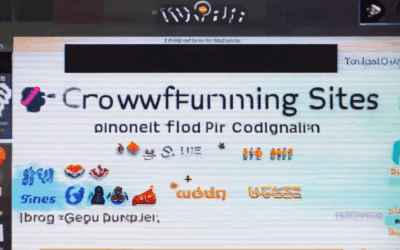Exploring game monetization alternatives has become a cornerstone of modern gaming strategies, as developers seek innovative ways to sustain and grow their businesses. With the ever-evolving landscape of the gaming industry, finding effective monetization methods that resonate with players while generating sustainable revenue remains a top priority. Whether through free-to-play models, microtransactions, or alternative strategies, the quest for diverse revenue streams continues to shape the future of gaming. This comprehensive exploration delves into the latest trends, strategies, and innovations in game monetization, offering valuable insights for developers and gamers alike. By examining the best practices, comparing top methods, and analyzing real-world success stories, this article provides a roadmap for navigating the complexities of game monetization in 2023 and beyond.
Key Takeaways
- Free-to-Play Games Can Generate Significant Revenue: By utilizing in-app purchases and optional purchases, F2P games successfully monetize without charging for access.
- Players Can Legally Earn Money Through Gaming: Opportunities exist through free-to-earn models, sponsored gaming, and content creation, offering diverse monetization avenues.
- Understanding the FtP Player Model is Crucial: This business strategy allows developers to tap into a broad audience while maintaining accessibility and engagement.
- Diversify Revenue Streams Beyond Traditional Methods: Explore alternative strategies like subscription models and explore emerging platforms for maximum reach.
- Balance Fun and Monetization Efforts: Maintain player satisfaction by avoiding pressure to spend, ensuring a harmonious gaming experience.
- Explore Emerging Platforms for Maximum Impact: Consider services like Apple Arcade and Google Stadia to apply these strategies across various gaming platforms.

What is the Best Way to Monetize a Game?
We understand that successfully monetizing a game involves balancing creativity with strategic planning. Below are proven methods that can help maximize revenue while maintaining a positive player experience:
- In-App Purchases (IAP): Offer players optional purchases within the game, such as virtual currency, power-ups, or exclusive content. This approach works well for games with a large, engaged audience.
- Premium Paid Downloads: Provide a high-quality, ad-free version of your game as a one-time purchase option for dedicated fans.
- In-Game Advertising: Integrate banner ads or video ads into non-playable areas of the game to generate revenue without disrupting gameplay.
- Ongoing Mobile Game Subscriptions: Charge a recurring fee for access to premium features, content updates, or exclusive rewards.
- Sponsorships and Partnerships: Partner with brands to integrate advertisements or sponsored content into your game, ensuring it aligns with your audience’s interests.
- Blended Monetization Strategies: Combine multiple methods to cater to different player preferences and maximize revenue potential. For example, use IAP for casual players and subscriptions for hardcore fans.
To succeed, consider these tips:
- Know Your Audience: Tailor monetization strategies to your target demographic to ensure they feel valued and not exploited.
- Ad Placement: Use careful placement for ads to maintain immersion and avoid frustrating your players.
- Fair Pricing: Set prices competitively to reflect the value players receive, whether through content or gameplay enhancements.
- Regular Updates: Keep your game fresh with new content, features, and events to encourage continued engagement and spending.
By thoughtfully implementing these strategies, you can create a sustainable revenue stream while delivering an enjoyable experience for your players. Remember, the goal is to enhance your game while respecting your audience’s expectations.
Best Monetization Strategies for Apps
Monetization is crucial for app success, with various methods available to maximize revenue. Here’s an overview of effective strategies:
- In-App Purchases (IAP): Offer premium features, virtual goods, or exclusive content within the app. Platforms like Google Play and Apple App Store facilitate this through their ecosystems.
- Advertisements: Implement ad networks like Google AdMob or Apple’s Ad Services to display targeted ads, ideal for casual gamers and lifestyle apps.
- Subscription Models: Provide recurring services via platforms like Patreon or Apple’s App Subscriptions for access to premium content or features.
- Freemium Model: Combine free and paid versions, offering basic features for free and advanced features for purchase, popularized by games like Candy Crush Saga and Angry Birds.
- Cross-Promotion: Partner with other apps or services to drive traffic and promote each other’s offerings, enhancing visibility and potential revenue streams.
- Affiliate Marketing: Earn commissions by promoting other products or services within the app, often through affiliate networks or partnerships.
Each strategy has its strengths, and the best approach often combines several methods. For instance, gaming apps may benefit more from ads and IAP, while productivity apps might lean towards subscriptions. Evaluate your target audience and app type to choose the most effective monetization tactics.

Most Common Monetization Model for Digital Games
Advertising is the most common monetization model for digital games across various platforms, including mobile, PC, console, and web-based games. Developers integrate ads into games to generate revenue by displaying promotional content to players during gameplay.
- Freemium Model: Many games offer a free-to-play version with premium features available through purchases. Examples include Pokemon GO and Clash of Clans .
- In-App Purchases: Games often include virtual goods, skins, or power-ups that players can purchase for real money. Popular examples include Candy Crush Saga and Minecraft .
- Subscription Services: Some games charge a monthly fee for access to premium content or exclusive features, akin to traditional software models. Examples include World of Warcraft and EA’s FIFA .
- Crowdfunding: Independent developers frequently turn to platforms like Kickstarter to fund their games, offering rewards such as early access or exclusive content to backers.
Advertising remains dominant due to its scalability and ease of implementation across different platforms. Platforms like Google Ads and Apple Ads provide targeted advertising solutions tailored to specific demographics and gaming behaviors.
Indie game developers often rely on a combination of these methods to sustain their projects and grow their fanbases. By leveraging multiple revenue streams, developers can cater to diverse audience preferences and maximize profitability.

One Way Free-to-Play Games Generate Revenue
Free-to-play (F2P) games consistently generate revenue primarily through in-app purchases. This model allows players to buy virtual goods, such as skins, characters, or power-ups, which enhances their gaming experience. These purchases are often optional and priced affordably to encourage frequent spending without feeling intrusive.
One common type of in-app purchase is cosmetic items, allowing players to customize their avatars or equipment. Another example is boosting items or currency that helps players progress faster in the game. By offering these purchases, developers can monetize their games effectively while maintaining player engagement.
This approach works well across various platforms, including mobile and PC games, as it aligns with player preferences for convenience and enjoyment. However, it’s crucial to balance monetization with gameplay to ensure players don’t feel pressured to spend.
For more insights into maximizing revenue potential for indie games, visit our resource hub .
Do Games Really Pay Money Without Paying?
Yes, it’s absolutely possible to earn money by playing games without spending money, though it requires some effort and knowledge. Here’s a breakdown of how you can make money playing games:
How to Make Money Playing Games
- Free-to-Earn Models : Many mobile and online games offer rewards for in-game achievements, purchases, or referrals. These can include real money, virtual currency, or gift cards.
- Sponsored Gaming : Some gamers participate in beta testing or become brand ambassadors for gaming companies. This often involves playing games and providing feedback for compensation.
- Streamming and Content Creation : If you’re skilled at gaming, you can monetize through platforms like YouTube, Twitch, or Facebook Live by streaming gameplay and attracting sponsors or advertisers.
- Indie Game Development : If you have a creative idea, you can develop your own game using tools like Unity or Unreal Engine. Platforms like Indie Dev Games provide resources and support for indie developers.
Top Game Platforms for Earning
- Google Play Store : Offers a variety of free-to-play games with monetization opportunities.
- Apple App Store : Similar to Google Play, featuring high-quality games that can earn money through ads and in-app purchases.
- Steam : While primarily for PC games, Steam offers opportunities for developers to monetize their games through sales and subscriptions.
- Kongregate : A platform known for casual and multiplayer games that allow developers to earn through ads and in-game purchases.
Tips for Success
- Choose Reliable Platforms : Stick to well-known platforms like Indie Dev Games to minimize risks.
- Understand Risks : Be aware that some gaming apps may not payout or could disappear.
- Engage Actively : Regular participation is key to earning rewards and progressing in games.
- Stay Updated : Keep track of new platforms and opportunities to maximize your earnings.
By leveraging these methods and platforms, you can legally earn money playing games without needing to pay upfront costs. Always research thoroughly before participating in any gaming program to ensure it’s legitimate and secure.

What is an FtP Player?
An FtP player refers to someone who plays Free-to-Play (“FtP”) games. These are games that allow players to access a significant portion of their content without cost. The “Free-to-Play business model” typically relies on optional purchases, such as in-game currency, skins, or power-ups, to generate revenue.
Key Aspects of FtP Games:
- Core Gameplay : The primary game mechanics and content are available at no cost.
- Optional Purchases : Players may purchase in-game items or upgrades for convenience, aesthetics, or enhanced gameplay.
- Revenue Model : Developers monetize through microtransactions, ads, or cosmetic item sales rather than upfront fees.
Examples of FtP Games:
- Mobile Games : Titles like Candy Crush Saga and Clash of Clans offer free gameplay with paid options for boosts or exclusive content.
- PC and Console Games : Games like Fortnite and Apex Legends provide free access to core modes with purchasable cosmetic items and season passes.
Advantages of FtP Models:
- Accessibility : Allows a broad audience to engage with the game without initial investment.
- Community Engagement : Encourages long-term playthroughs and social interactions through shared content.
- Business Sustainability : Provides a viable alternative to traditional retail models, enabling smaller developers to thrive.
Considerations:
- Monetization Pressure : Players may feel pressured to spend money to progress or enjoy the game fully.
- Fairness Concerns : Some argue that paying players may gain advantages over non-paying counterparts.
- Quality Assurance : High-quality games may struggle to sustain content creation without a reliable revenue stream.
Competitors and Alternatives:
While FtP dominates mobile gaming, other platforms like Apple Arcade and Google Stadia offer similar models for console and PC gamers. Each service caters to slightly different audiences, emphasizing unique game libraries and subscription models.
By embracing the FtP model, developers can tap into a vast audience while experimenting with diverse monetization strategies, ensuring games remain accessible and engaging for everyone.




0 Comments